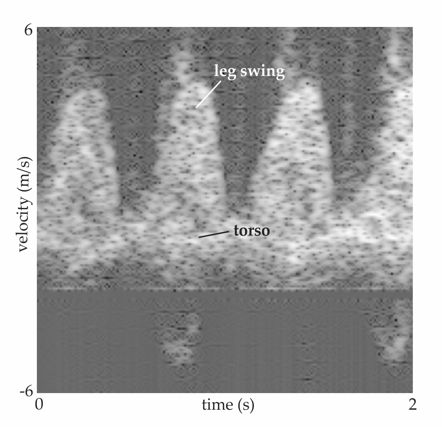Doppler sonar in air for border security
DOI: 10.1063/PT.3.1594
Doppler sonar in air for border security. We normally think of ultrasound as emanating from a medical device pressed against the body and of sonar as useful mainly for submarines and bats. But now humans can usefully combine the two in open air. The audible Doppler effect is apparent to anyone who has heard a siren on a moving emergency vehicle. James Sabatier (University of Mississippi) and his colleagues are using the same principle with ultrasound at 40 kHz to detect and analyze human motion. With a sonar technique similar to radar, they previously identified key features of the human gait, such as isolated leg, foot, and torso velocities; his team also was able to distinguish walking humans from other animals. In two new papers, Sabatier and Marshall Bradley are bringing the work still closer to the real world. A new theoretical analysis of detection thresholds includes not only equipment shortcomings but also attenuation, environmental noise from wind, and signals backscattered by ground and vegetation. The conclusion? A walking person can be detected at a range of 10–17 meters, depending on the elevation of the sensor. An experimental follow-up confirmed the analysis and extracted some additional properties of adult gaits, as shown in the sonar gram. In particular, a value greater than about 3.6 m for the product of peak leg velocity and walk cycle time almost exclusively indicates men; smaller values are not gender specific. Such knowledge might prove useful for monitoring a trail or road near a border. (M. Bradley, J. M. Sabatier, J. Acoust. Soc. Am. 131, EL203, 2012; 131, EL210, 2012.)






